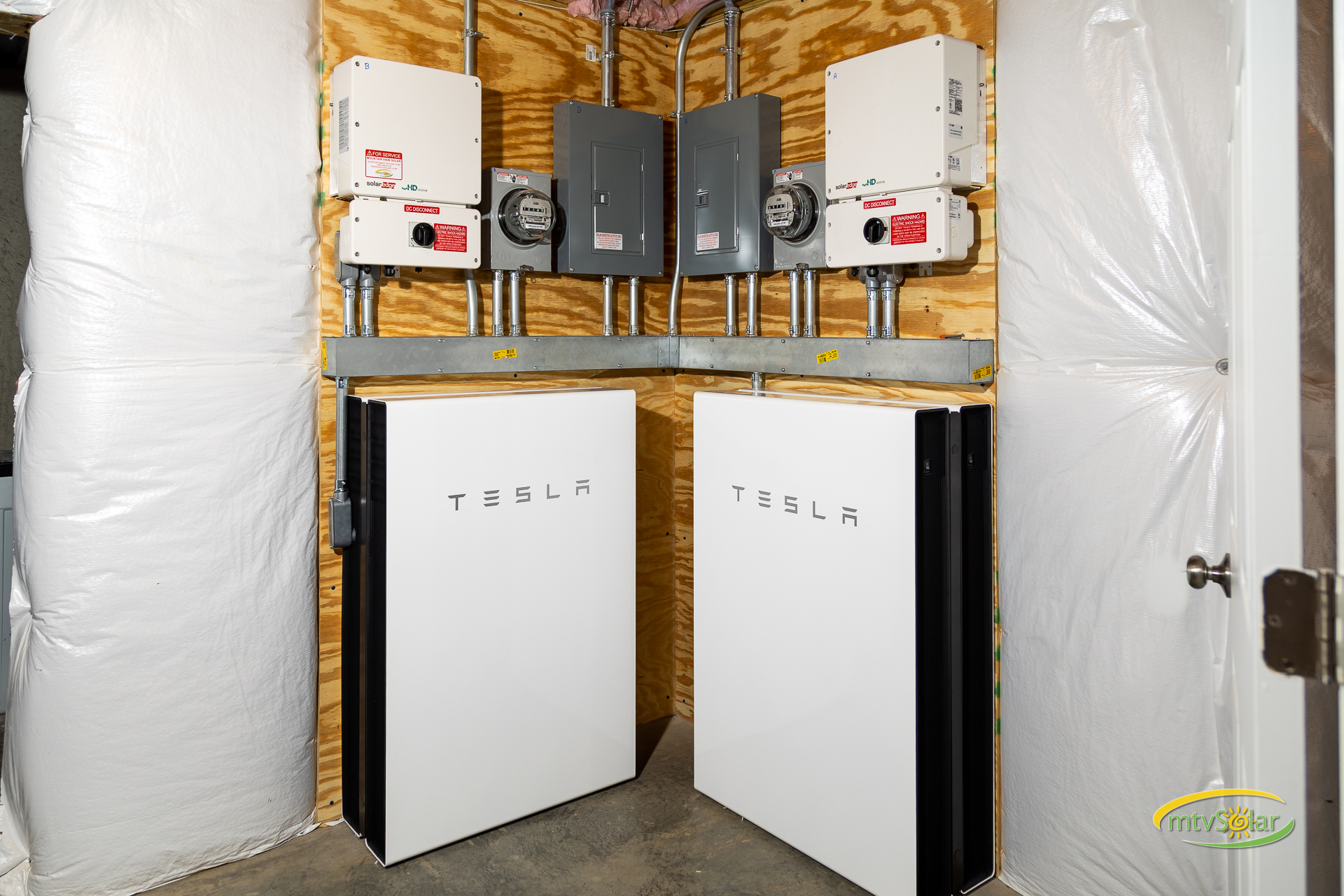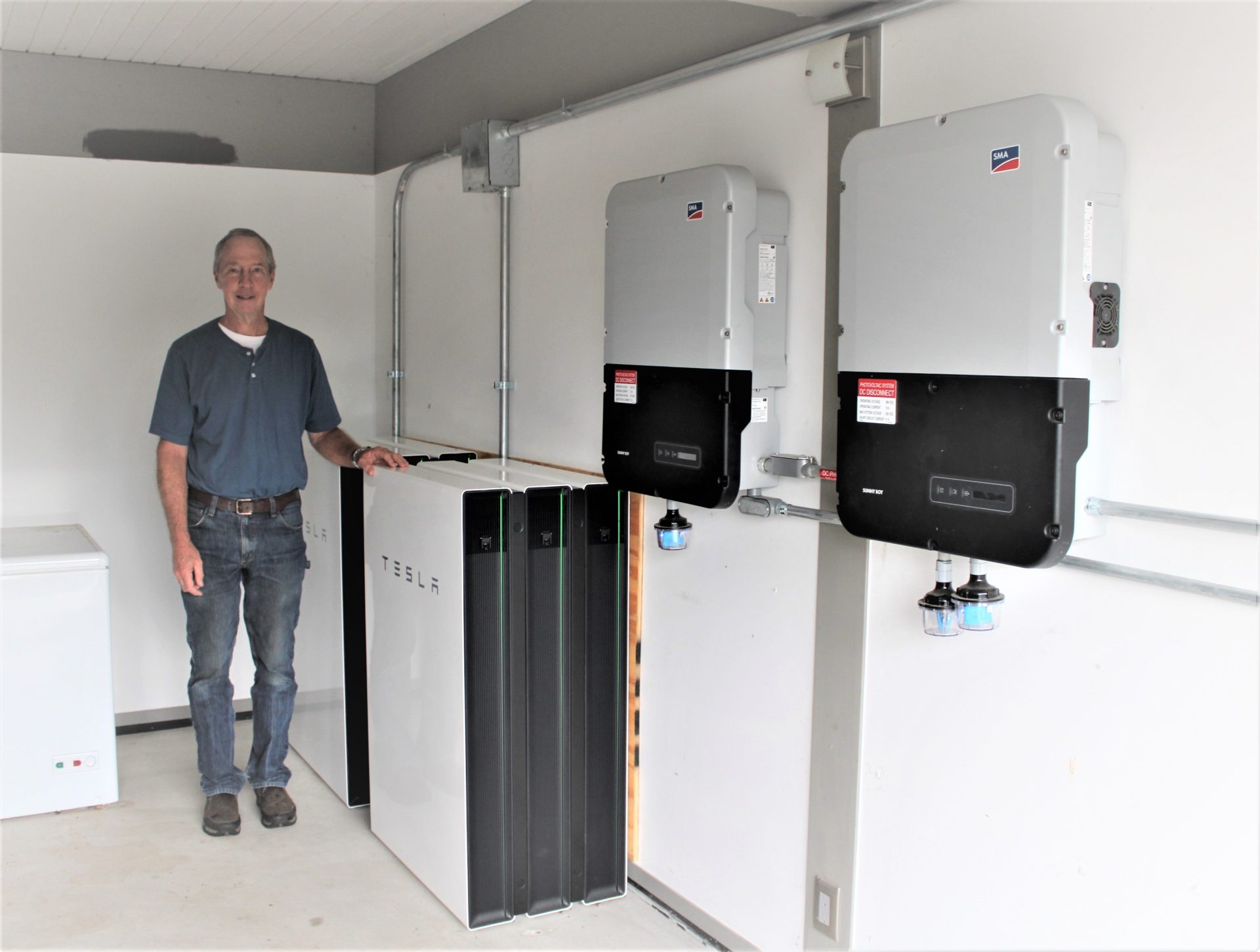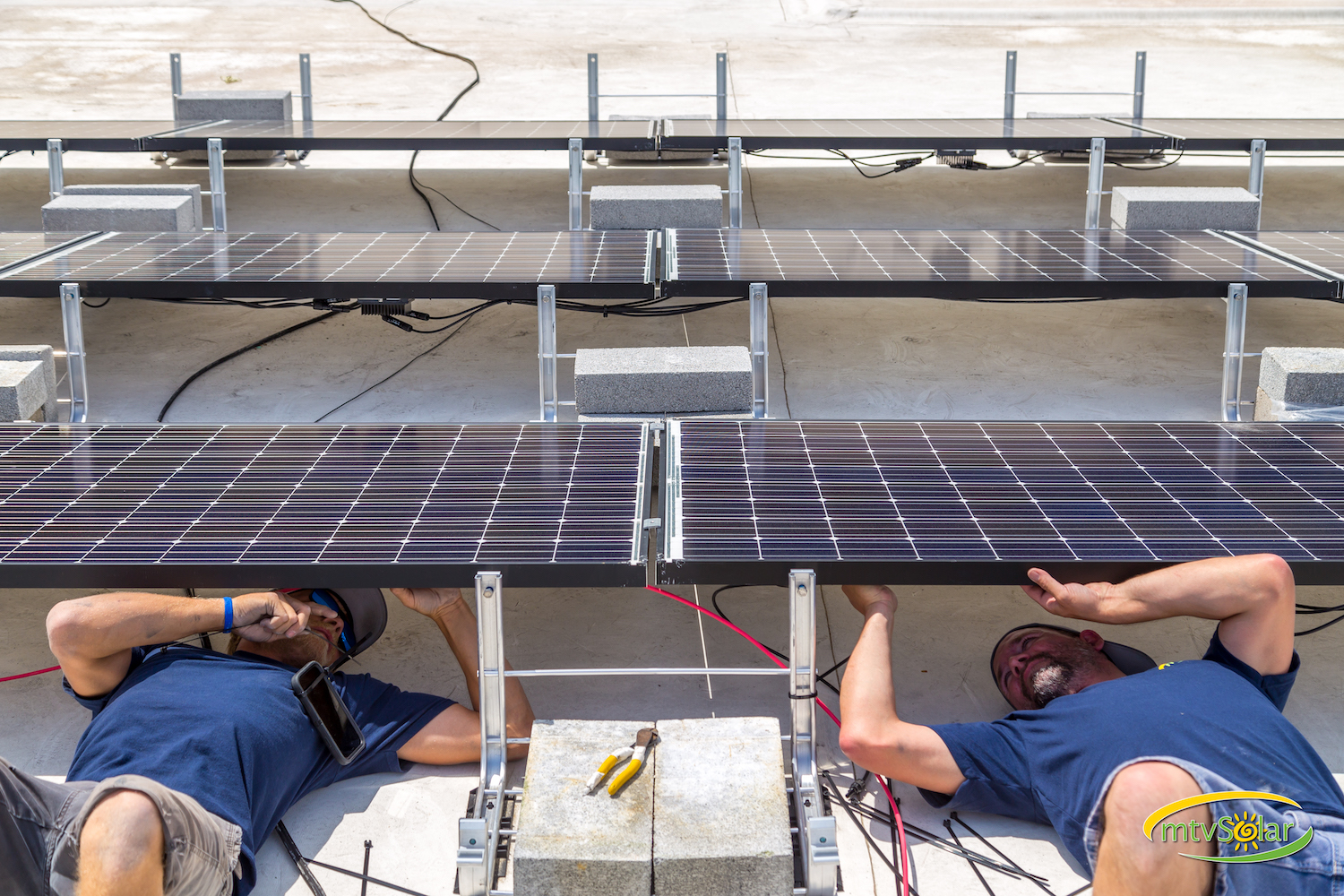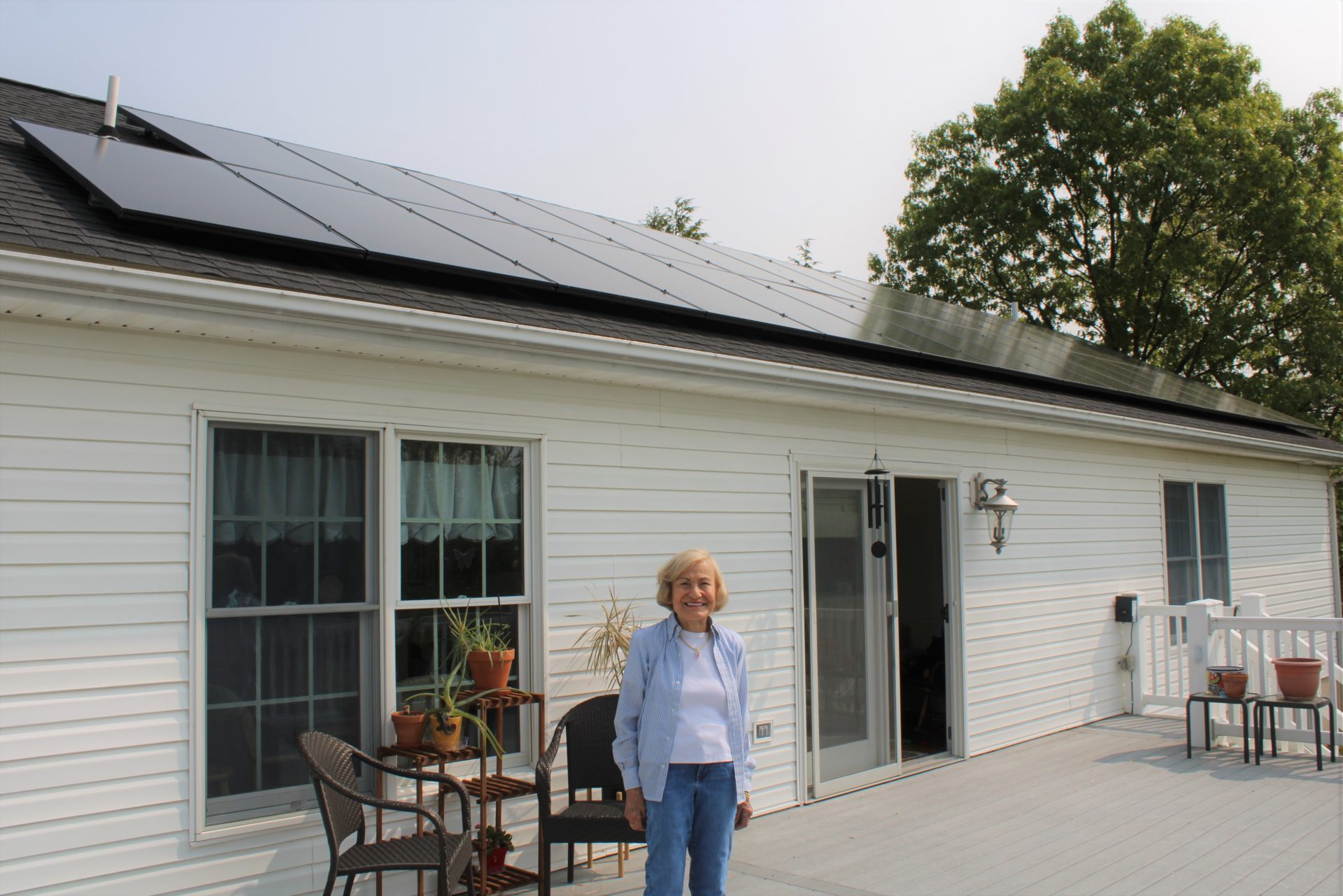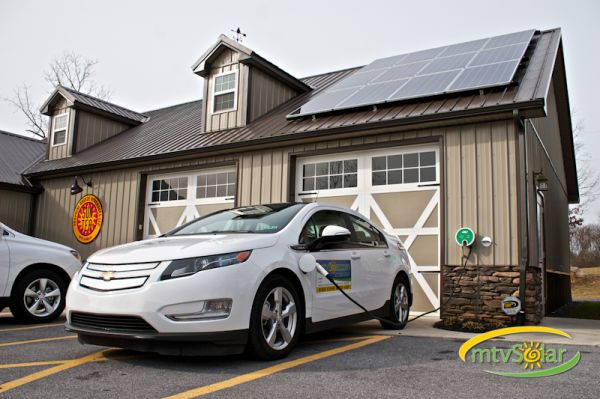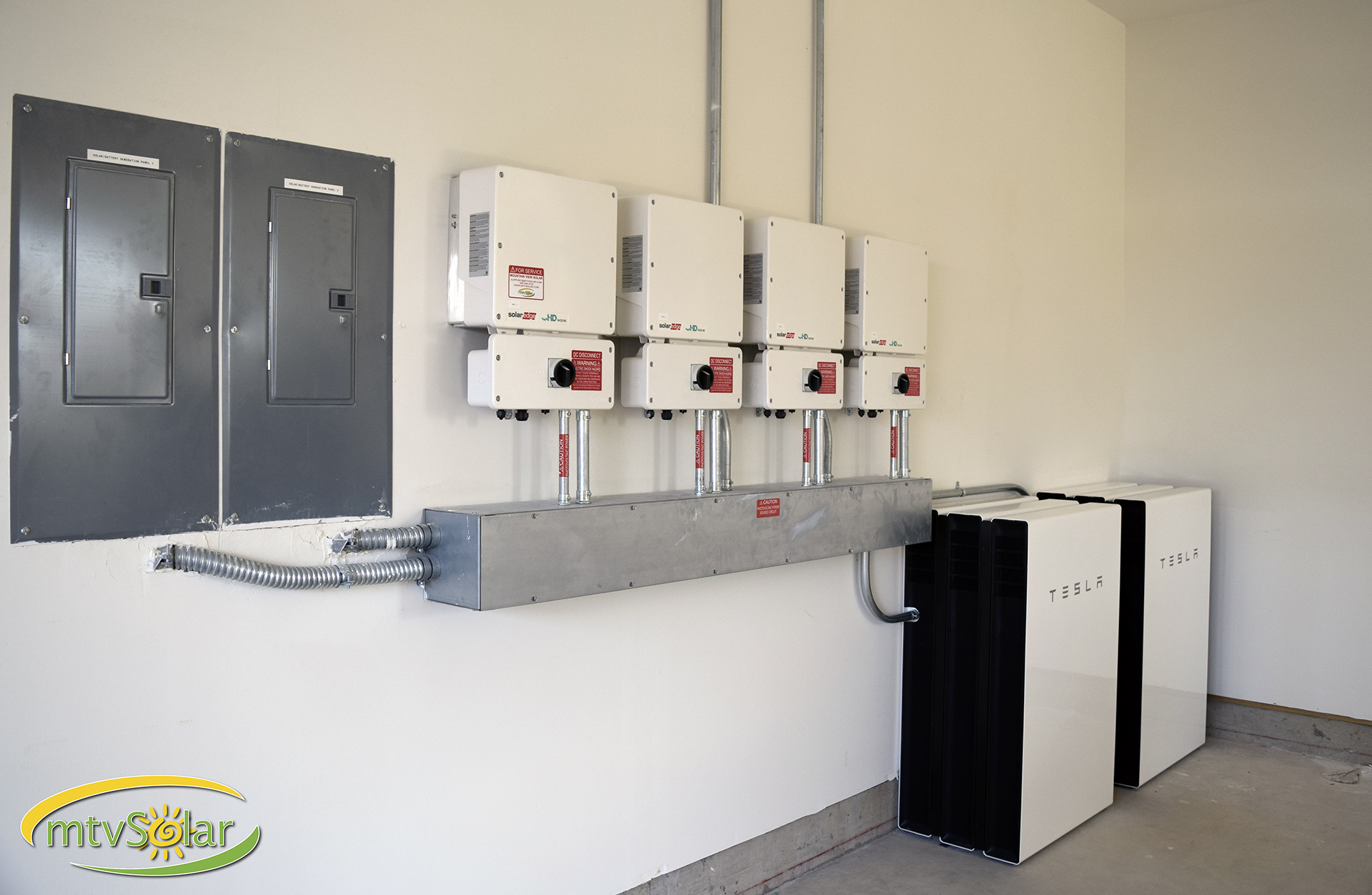Conserving energy, using battery storage and solar power and testing your energy capabilities can make a power outage easier to navigate.
Continue readingBuild the ultimate backup system
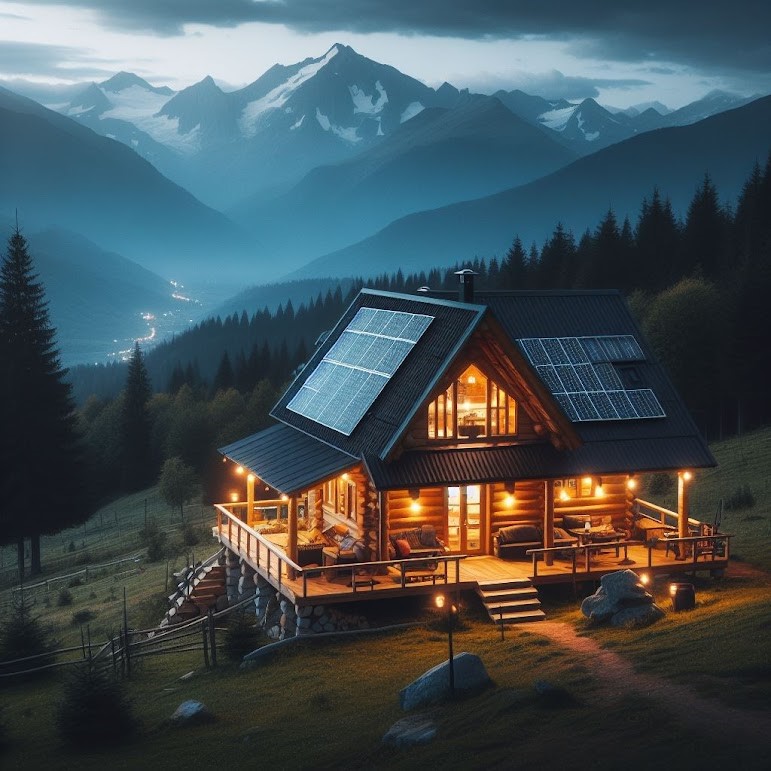
Be ready for anything.
The world’s full of uncertainties. From monster storms to surprise grid hacks, you deserve power on demand. Forget scrambling in the dark – mtvSolar builds ultimate backup systems, crafted for your peace of mind.
No outages, no worries:
- Stay grid-connected: Enjoy solar power with seamless backup during dips and blackouts.
- Go fully off-grid: Ditch the grid entirely and embrace independent energy freedom.
- Fuel for all seasons: An auto-start propane generator can kick in when sunlight is limited and the batteries need a boost, only sipping fuel as needed.
- Control without being online: We design systems that thrive even without internet reliance.
- Tailored to you: We craft the perfect backup solution for your needs and budget.
Don’t wait for the lights to go out. Embrace your power today.
Get a free consultation and secure your bright future with Mountain View Solar.
Plan now to grab Maryland energy storage tax credits for 2024
Maryland’s Energy tax credits for residential energy storage projects (think battery systems) were so popular in 2023 that the Maryland Energy Administration (MEA) stopped taking tax credit applications in August, anticipating the state would run out of designated funds well before the end of the year. Maryland’s lawmakers had agreed to set aside $750,000 in the 2023 tax year. Once the money was given out in tax credit certificates, that was it for the year.
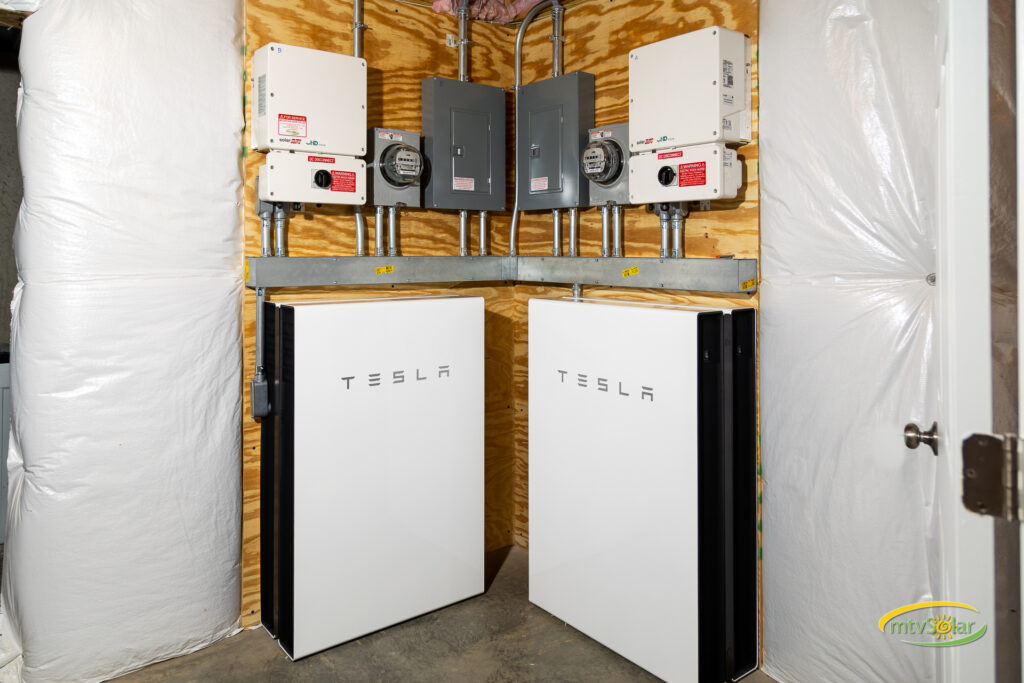
The MEA was authorized to give out tax credits for 30% of the cost of an energy storage system — up to $5,000 in tax credits for a system installed in a residential property, and up to $150,000 for a system installed in a commercial property.
For many homeowners and businesses, these credits offered a big incentive to add energy storage components for a variety of reasons — to weather power outages, offset peak demand charges and establish energy stability for themselves.
The popularity of the tax credits this calendar year are a preview of 2024. Under Maryland law, the new year will replenish the Maryland Energy Storage Income Tax Credit fund back to its annual level of $750,000. That means homeowners and businesses can start adding energy storage and battery systems, and tap into the new pool of credits for 2024. The fund is set to run through the end of 2024, as long as the money holds out.
Maryland customers thinking of adding a battery storage system to tie into your solar panels should act early in 2024 to grab the state tax incentives while they last. mtvSolar is proud to serve customers all over Maryland and has the battery expertise to talk you through your options. Call us at 540-686-2052 to find out more.
We tested out the new Smart Load controller for you
This week, we put the SolarEdge Smart Home load controller to the test! Our team trained with SolarEdge on site to install the controller in one of our own homes — letting us see how this new component can fit into residential settings and work with existing solar components. We liked what we saw!
Take control of your home energy like never before!
The SolarEdge Smart Load Controller is a game-changer. It gives homeowners an easy way to manage what gets power during an outage, and for how long. Here’s what else:
- Maximize your solar self-consumption: Use more of the clean energy your panels produce, reducing your reliance on the grid and saving you money.
- Extend your backup battery power: Prioritize essential appliances during outages, keeping your lights on and your family comfortable.
- Schedule and control your heavy hitters: Run appliances like pool pumps, air conditioners, and electric vehicle chargers on your own terms, using smart scheduling and remote control.
- Track your energy in real-time: Monitor your solar production, consumption, and savings with the user-friendly mySolarEdge app.
Our field-tests of the controller, with company reps and our top electricians working side by side, gave us a real-life look at whether this new component is suitable for our customers. The answer — it is.
The SolarEdge Smart Load Controller is available NOW from mtvSolar! Want to know more? Let’s chat!
Call us now at 540-686-2052.
Customer testimonial: A quick response to add battery backup in rural Pennsylvania
After losing power over Christmas for a day and a half, Steve Hendricks starting looking into a battery backup system to tie to his home’s solar panels in the rural countryside of Bedford County, Pa. He and his wife were in line for a Tesla Powerwall, but the installation options fell through. Steve searched online and found mtvSolar was a certified Tesla Powerwall installer, and called us. Consultant Natalie Friend responded right away, and very soon Steve had four Powerwalls in action. Several months later, he decided to add two more Powerwalls to help charge the couple’s electric vehicles and add to their rural home’s power backup system. Steve called us back and after a day’s work, we had upgraded his system to six Powerwalls.
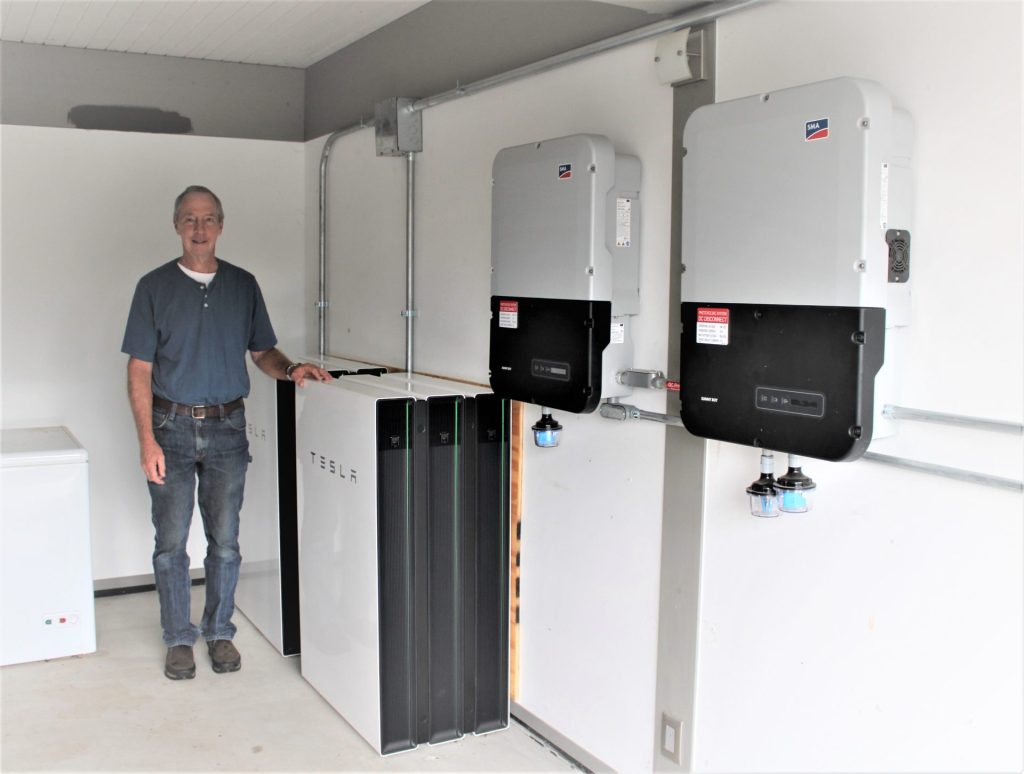
Steve said the first four batteries were able to cover the whole house electric needs, but he wanted to ensure there wouldn’t be any more power interruptions. Just last week, the power went out for his neighbors and he said he never would have known the grid was down except that his Tesla monitoring app sent him a notification it had happened.
Steve was impressed by how responsive mtvSolar was to his request for the batteries and installation work, and how hard everyone worked to get the job done. Everyone he encountered was friendly and took time to explain the work they were doing. “It was a totally positive experience,” he said. He would recommend mtvSolar to anyone interested in building out their own solar and battery backup system.
Nothing lasts forever: Solar & energy experts are gearing up for the realities of product lifespan
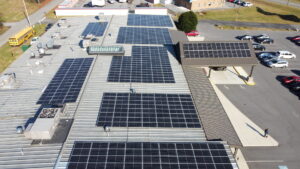
The industry standard warranty on a photovoltaic panel is typically between 25 and 30 years, according to industry experts. At mtvSolar, we work under warranties that promise our components will last 25 years — but we know they will last much longer. Some solar panels installed in the 1980s are still generating effective power still today! Battery systems have a shorter expected lifespan — and generally have a 10-year warranty. But the real-life use of battery backup systems means they last much longer, too.
“Depending on use, they will last much longer. Most batteries that we install are for backup, and not cycled daily. So they’re not going to be worn out in 10 years,” says Lydie Miles-Monaghan, Director of mtvSolar’s Department of Technology & Design. Miles-Monaghan is our company’s battery expert, and tracks new developments in lifespan issues and performance for the products we install.
Our customers take the realities of product lifespan into consideration when planning their solar energy and battery storage systems. How old will they be when the panels need to be replaced? Who will own the home then? What’s the age of the roof that will hold a mounted solar array? Will the roof need to be replaced before the solar panels do? What do we do with solar panels and home battery systems at the end of their life?
As solar energy surges in popularity for residential homes, farms and commercial buildings, our industry continues to refine panel design to make them last longer and perform better. Meanwhile, others in the energy sector are figuring out the best way to reuse and recycle solar PV panels that are out of service. Developing these processes will become more important as the number of panels installed grows exponentially.
At mtvSolar, we collect and store broken or aged-out panels and work with a local recycler to dispose of them. Panels that are still functional but have been removed for one reason or another from a customer’s property are held for our service projects and give-away programs. Some customers will upgrade their panels long before they wear out. These are panels that still have years of effective solar generation left in them, and just need a new home, which we love to find.
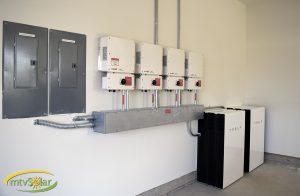
Battery systems are relatively new in the residential energy world but are taking hold more widely. No lithium batteries we’ve installed have had to be recycled yet. All lead acid batteries are 100% recycled into new batteries.
The U.S. Department of Energy’s Solar Energies Technology Office is working with the solar industry to track solar panel lifespan, measure the cost of recycling panels (vs. landfilling them) and develop ways to cut the end-of-life disposal costs in half by 2030.
“As we accelerate deployment of photovoltaic systems, we must also recognize the pressing need to address end-of-life for the materials in a sustainable way,” said Kelly Speakes-Backman, Principal Deputy Assistant Secretary for the Office of Energy Efficiency and Renewable Energy at the U.S. Department of Energy. “We are committed to ensuring that the recovery, reuse, recycling, and disposal of these systems and their components are accessible, low-cost and have minimal environmental impact.”
The U.S. Department of Energy reports that 70% of the current solar PV systems in the U.S. have been installed since 2017 — a huge jump in deployment that points to a need for recycling and disposal answers down the road. They are funding projects that promise to reveal new materials, new technologies and better manufacturing processes to reduce pollution associated with the making and disposal of panels. DOE Releases Action Plan For Photovoltaic Systems End-Of-Life Management | Department of Energy
Our approach at mtvSolar at the local level is to use high-quality components that are proven to last, to install panels and their components properly to maximize their function, and to reuse panels by donating them to nonprofits. Our design team right-sizes all solar installations for each customer, so there are no wasted panels and components can function as they are designed for the full length of their warranty and beyond.
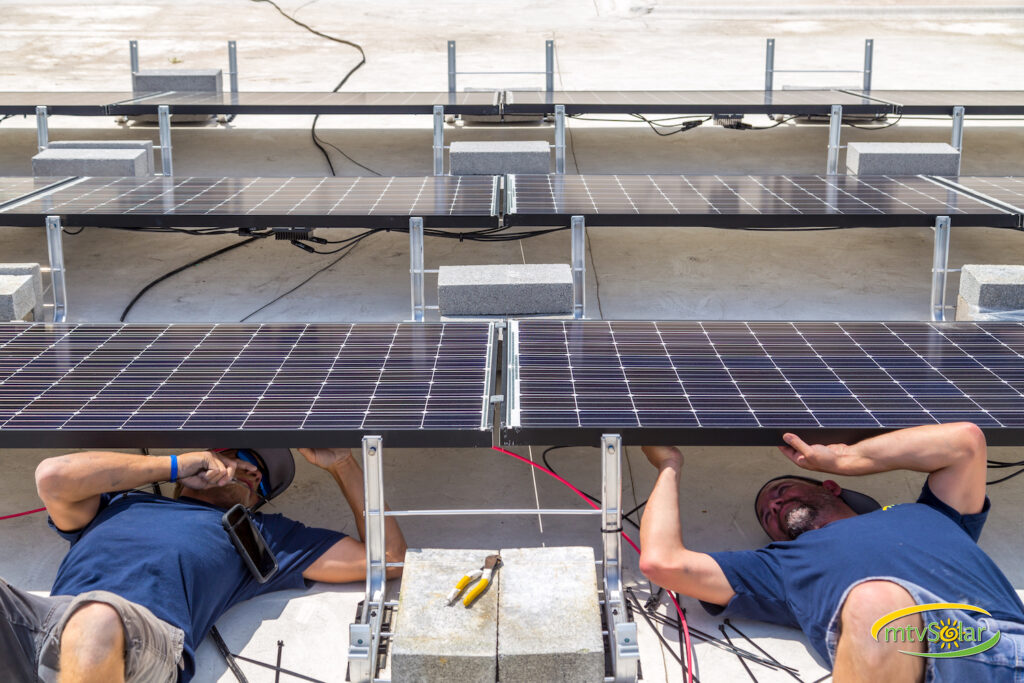
A company to grow with — Mike Studholme’s first 10 years with mtvSolar
Mike Studholme’s rising career in the solar industry began, in his words, with one Thanksgiving conversation with his uncle. Mike was going to community college in Northern Virginia for a degree in business administration and his uncle, John Christensen, was working for Mountain View Solar. The company was putting up a windmill at the time, and the two talked over the project.
“Uncle JB” mentioned that Hagerstown Community College (Md.) had a renewable energy program, and Mike’s interest was hooked. John offered for his nephew to live with him, just a short distance from the college, while he completed the program. Mike said he hesitated because he wouldn’t be earning enough to pay his uncle rent. JB proposed a deal — Mike would cover his uncle’s electric bill in lieu of rent. They agreed, and Mike soon learned his first lesson in residential solar.
“He had 40 solar panels on his house. The electric bill was like $5 per month,” Mike recalled, laughing.
While he finished his degree, Mike interned with mtvSolar once a week, and then moved into a full-time internship in 2013, helping the company do whatever needed to be done. His first solar installation was a ground mount. Back at the Berkeley Springs office, he took care of the company’s recycling and entered data in the sales program. That’s where he learned about the tax credits that helped customers afford to solar to their homes and businesses.
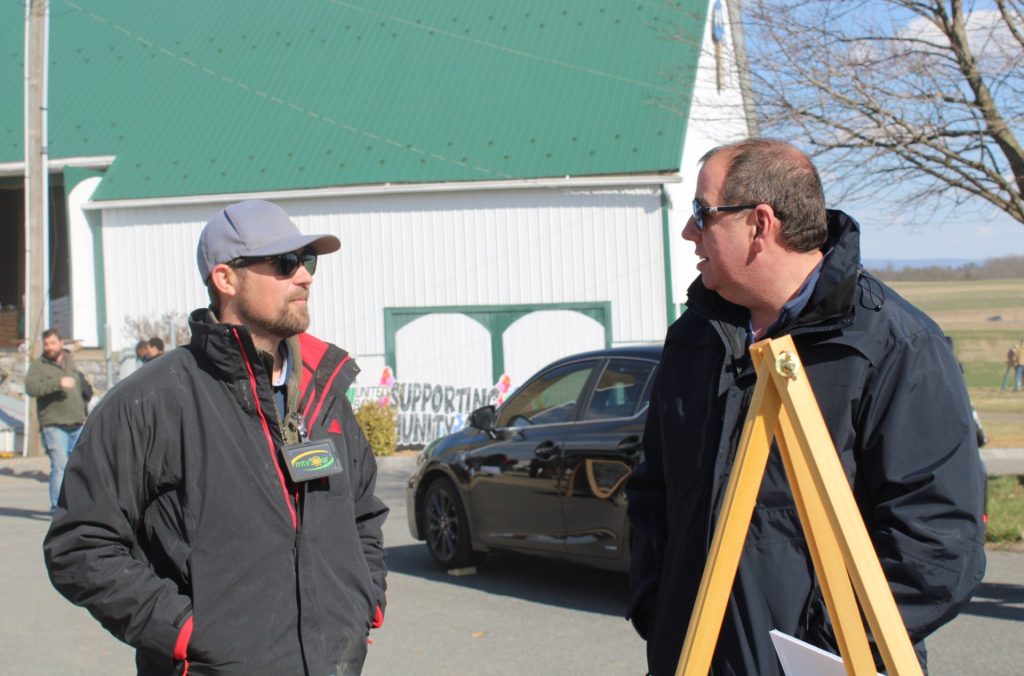
In May of 2014, Mike started with the company full-time, taking phone calls, processing return authorizations for equipment replacements, helping with permitting and learning to do lead qualifications. All the while, Mike was helping with solar installations, and working toward one of the company’s first energy certifications – the North American Board of Certified Energy Practitioners (NABCEP).
“I took it and passed it the first time,” Mike said of the rigorous testing. “In order to take the test, you have to show your hours and level of involvement and study in the field.”
The certification was just one of the many thresholds Mike crossed on his journey to become mtvSolar’s Senior Solar PV and Battery Consultant. He went on to become the lead for the installation crew, which he led for several years, primarily in residential solar. Then mtvSolar took on remote power services for FAA lights on top of large power transmission structures, and Mike became foreman of that project.
“That’s the cool thing about solar – every day is different,” Mike said. “It felt like I was wearing five hats at a time.”
With so many aspects of the company’s technical work under his belt, Mike asked management if he might have an opportunity to join the sales team. His friends told him he had a talent for pitching projects, and Mike had already been working with the team at home shows, talking about mtvSolar’s capabilities and offerings.
In 2016, Mike stepped into sales at the company. He didn’t leave his other roles entirely, though.
“Some of the early jobs I sold, I also installed,” he said.
Solar installations weren’t so mainstream then, and panels were more expensive than they have become in today’s energy market. In the years since, Mike Studholme has seen access to solar energy equipment open up immensely.
“I think the adoption of solar is going to explode,” he predicts. “Solar’s one of those things – once you have it, you’re never not going to have solar.”
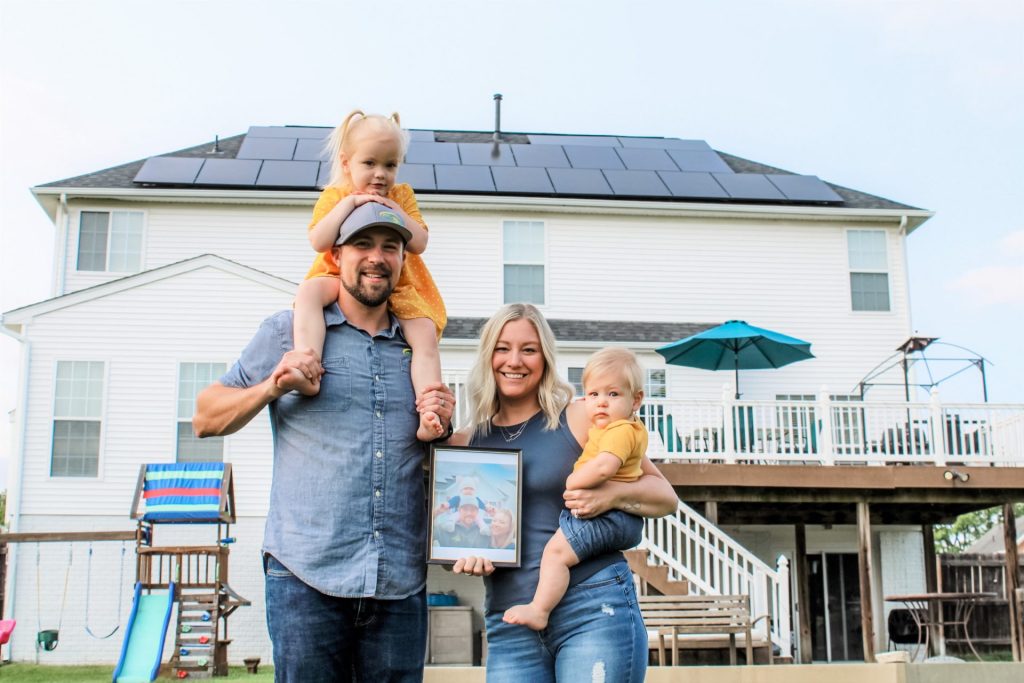
Mike’s own home solar generation system has grown along with his career and his family. Mike married his wife Samantha in May of 2018. Samantha works for the American Heart Association, and is a “social butterfly” who enjoys music and books, says Mike. The couple have a daughter Mila, and younger son Jack, who turned 10 months old just shy of the Studholme’s fifth wedding anniversary. The couple celebrated their anniversary at the Nestled Inn in Bluemont – one of Mike’s solar clients.
Every month, Mike is reminded of the value of powering his family home with the sun.
“It helps me feel like I’m making an impact, but silently. I see it every month in the electric bill and in how many carbon pounds I’ve offset,” he said. “It’s just a great investment.”
Mike’s own deep knowledge of solar – through every step of the process – continues to grow as he enters his second decade with mtvSolar.
“It’s been such an awesome ride. Mike and Kelly have always been supportive of me growing in the company,” he said.
Over the years, Mike Studholme has come to understand what his customers are looking for, and what they value in going solar.
“The sentiment of taking ownership of your power needs instead of renting it monthly from the utility resonates well with people,” he said. Fixing or lowering a monthly electricity expense over many decades just adds up.
“People are adding a tangible asset at the same time they’re making a global impact on our carbon footprint,” Mike explained. “It’s an investment that people never regret making.”
Customer testimonial: Jan Weinberg
Jan Weinberg had been thinking about adding solar energy to her home for years, but decided to take the leap when new federal incentives were announced this year. When she started researching solar companies, it made sense to go with mtvSolar because she lives in Berkeley Springs, WV.
“I live in this community and I shop in this community,” Jan said. “I like a company that hires good local people.”
Jan also liked finding out that mtvSolar is purposefully inclusive in hiring.
Weinberg said everyone who came to install her 17.8 kW array was friendly, professional and conscientious.
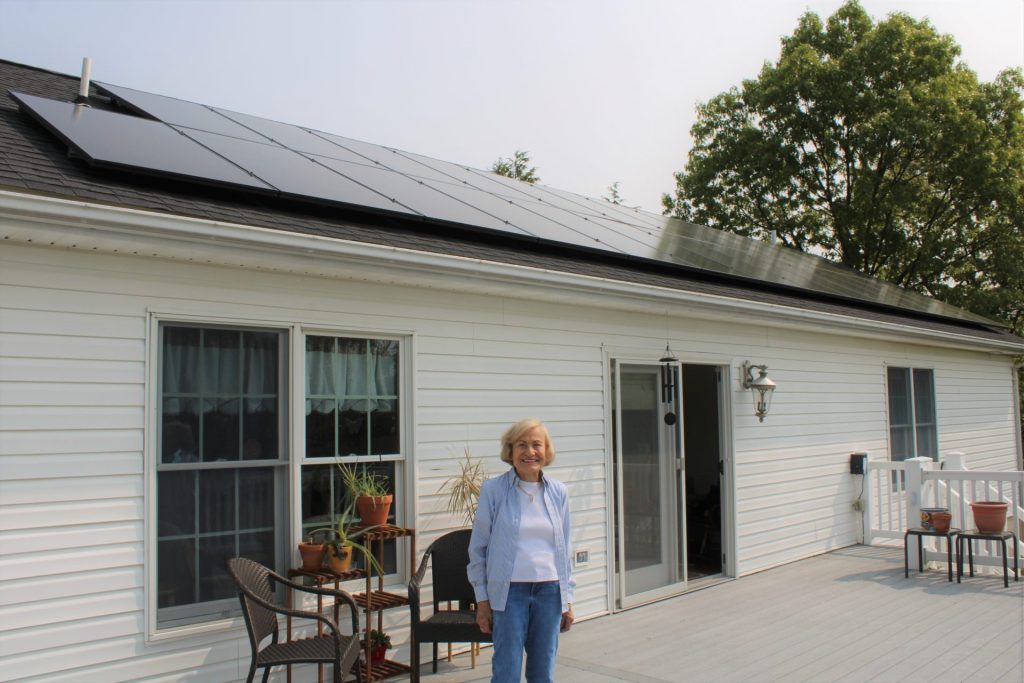
“They were right on the ball and right on time,” she said.
“MTV Solar was incredible to work with. They explained things in a way I could understand, and they continually kept me informed as to their progress – they were always on schedule,” Jan said. “They were great communicators and very efficient.”
Henry Gill-Newton flipped the switch on for her array in February, and she saw her electricity bill drop immediately from $325 to $25. The system’s 45 Tesla modules grab full sun on her home and one side of her garage – more panels that she had initially planned. Her daughter encouraged Jan to use as much roof space as possible to take advantage of the power generation.
Jan said the lower electric bills are fantastic, but she was equally motivated to invest in solar because of her commitment to the environment.
“I think it’s our duty and our responsibility to do anything to help the environment, even in a small way,” Jan said.
She sees her investment in solar as a long-term gain, and one she hopes her children will benefit from.
“I’m old. I don’t do all the new technology or software. So why would I choose solar? I believe it’s a great investment – especially in the future by cutting the carbon footprint,” Jan said. “I highly recommend mtvSolar to any of my friends and family members.”
Sun, home & vehicle — power in every direction
One of the most exciting developments in energy recently has been the debut of bi-directional electrical vehicle (EV) chargers. This technology, now becoming available in the marketplace, has turned home-to-EV chargers into a conduit to vehicle battery power. Combined with solar PV panels that bring power into a home or business, the bi-directional EV chargers can create a flow of renewable energy that integrates the key parts of everyday life.
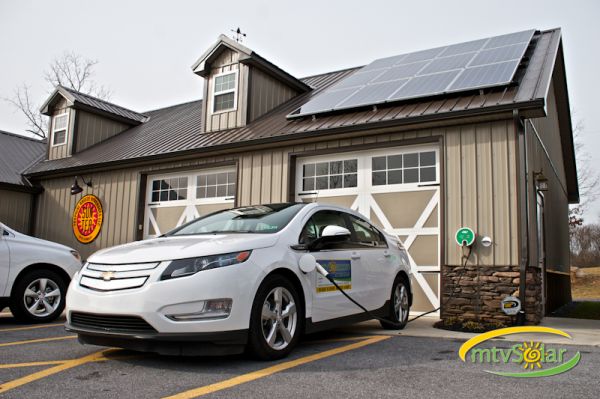
As The Washington Post reported recently, electrical vehicle manufacturers have recognized the value of making an EV’s large battery storage capacity available to their owners for more than just driving up the road. A fully-charged EV sitting in the garage can now — with the right accompanying equipment — be tapped to power a home when needed.
Power goes both ways
Because electric vehicles already have the capability to dispense electricity, the leap to send power back to the home was a logical next step. Some EV manufacturers have now built their vehicles with that in mind.
“Instead of plugging appliances into the truck, the truck plugs into the house, replacing the grid. This requires some equipment: an 80-amp bidirectional charger and a home integration system, which is a hardware unit that allows you to disconnect your house from the grid and power it with the truck,” the Post reported about one such vehicle.
Poised for new technology
One of our product partners, Enphase, is developing their own product to enable the V2H and V2G flow.
Enphase is currently working with EV manufacturers, regulators, and others to bring their bidirectional charger to market in 2024.
mtvSolar has evolved with the solar and battery industry since day one and is excited to see the Vehicle-to-Home (V2H) and Vehicle-to-Grid (V2G) technology become available to our customers. Our team has more than a decade of experience installing EV chargers in our customers’ homes and businesses in tandem with solar, and we are poised to add V2H and V2G options as they continue to roll out into the renewable energy market.
To stay connected with mtvSolar and see how we continue to help customers achieve their energy goals, like us on Facebook or email us with questions at info@mtvsolar.com.
Remote work hinges on the power to stay connected
Working from home wasn’t born during COVID, but pandemic shutdowns and evolving workplaces have made remote work a new mainstream way of earning a living.
Waves of urban and suburban workers have spread out into more rural communities, where the cost of living is lower. More land choices, greater options for homesteading and dreams of self-sufficiency led people to buy homes and property outside of metropolitan areas. Because of remote work options, that no longer means giving up good-paying jobs or professional opportunities. It’s now normal to work on a business team that’s spread across several states, or even countries, and to hold meetings where no one is in the same room together. Adapting to this new work flow has happened successfully for millions of people across all industries. But this revolution hinges on two key factors – the availability of broadband internet and reliable electricity.
Many communities in rural states like West Virginia are pooling federal, state and local resources to expand broadband service to all residents – from families with school children to remote workers. Broadband internet is now considered to be an essential utility, much like electricity.
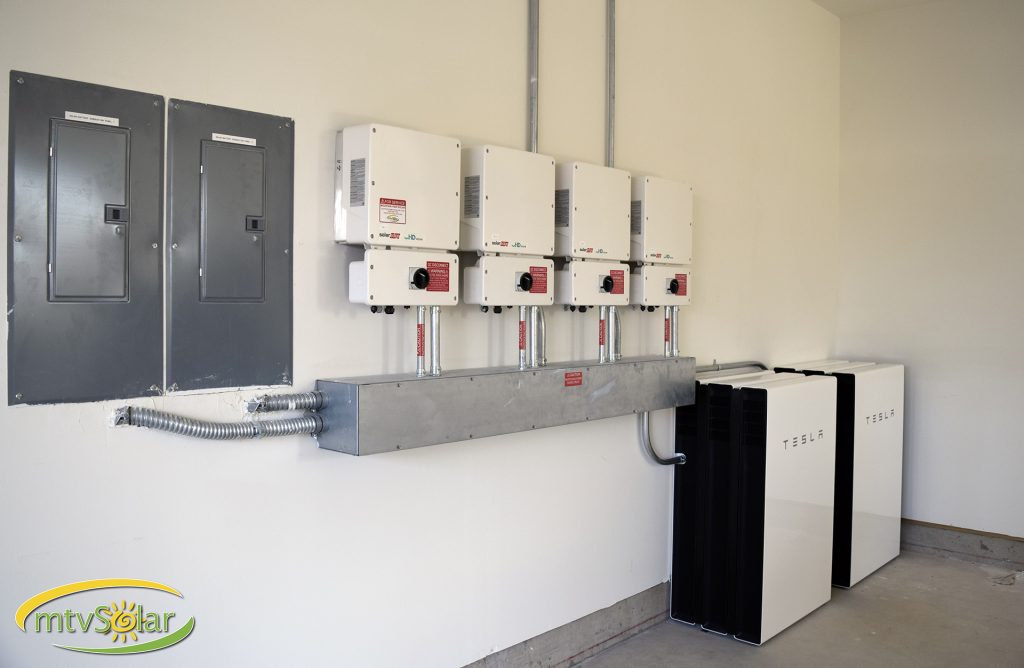
But some rural residents struggle when electric service fails, taking away the power source for their connection to remote work. Lost power means lost worktime, as some newly-rural workers are finding out. A multi-day outage, not uncommon in some small communities, has impacts on both home and work opportunities.
Solar energy is an excellent option for home power needs, but can be an even bigger game-changer in times of total power outages or grid failures. With a properly-designed system of solar PV panels and battery storage, a house and home office can continue to run essential equipment no matter what the power grid does. Big advances in battery storage options, along with energy management tools, mean mtvSolar customers can control their own power system. These systems — whether in a home or a small business — can be a wise investment for remote workers whose livelihood and new way of life are dependent on continuous broadband internet access, and the power to stay connected.
If you’re interested in learning more about our expertise in designing a solar power and battery system for your home, business and remote working needs, read more here: https://mtvsolar.com/resource-center/all-about-batteries/ or contact us for a consultation.




